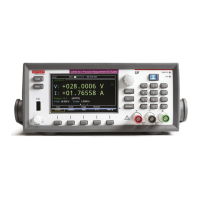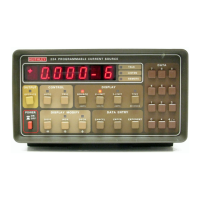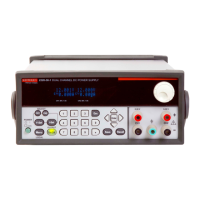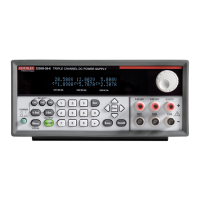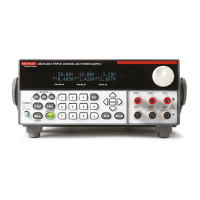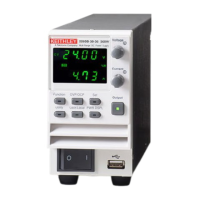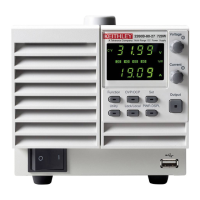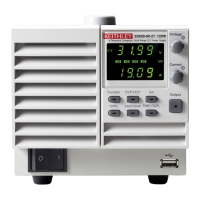The battery under test and the Model 2281S-20-6 can
be connected by two-wire sense connections. However,
four-wire sense connections, as shown in the following
gure, are recommended because they cancel out the wire
resistance.
DUT
To measure the battery capacity and generate a battery
model in the battery test function:
After connecting the battery to the instrument, test the
battery and generate a battery model using the front panel,
with the following process.
To test a battery and generate a battery model:
1. Select the battery test function on the startup screen.
2. Press the MENU key.
3. Under Source, select (Dis)charge to congure the
settings for discharging the battery to the empty state
rst.
4. Set the target voltage next to V-Set. For example, for a
Li-Ion battery that works in the range of 3.8 V to 4.2 V,
you need to set the target voltage slightly lower than 3.8
V to make sure the battery will be discharged fully.
5. Set the end current next to End condition to 10 mA.
When the discharging current is lower than this value,
the 2281S stops discharging and turn o the output.
6. Press the OUTPUT key on the front panel to discharge
the battery.Wait until the discharging is complete and the
2281S output is turned o.
The instrument always absorbs current at its maximum
capacity, approximately 1 A. This sink current is not
programmable. If the maximum output current of the
battery under test is less than 1 A, you should connect
a resistor between the instrument and the battery to
prevent the battery from switching into protection mode
or being damaged.
